The development of Coastal shipping between
Colonial Ports in Australia
Coasters - the ships that made weekly or twice weekly runs between the major colonial ports filling a need for practical transportation and speed of travel.
Australian road and rail routes were slow to develop for a variety of reasons. This included difficult coastal terrain and lack of communication between towns that were often thousands of miles apart. The first paddle steamer was the “Sophia Jane” which was used between Sydney and the Hunter River in 1831. “William the Fourth”, the first ship built in Australia was viewed with concern as
“At that time it was not considered at all likely that two steamers could be found profitable employment in the Australian coasting trade”.
Profitable employment for the coastal ships was certainly found. The industry exploded in both the number of ships employed, and the produce and passengers that moved along our defacto coastal highway.
In 1842, the SS Shamrock made its journey to Moreton Bay with Governor Gipps onboard. The story goes that Governor Gipps had to alight at Cleveland in mud which displeased him immensely and hence he chose Brisbane as the capital of the region rather than Cleveland. It was also said that ships pulling up at Cleveland in the early days had to anchor to a large gum tree as there was a lack of anchoring facilities.
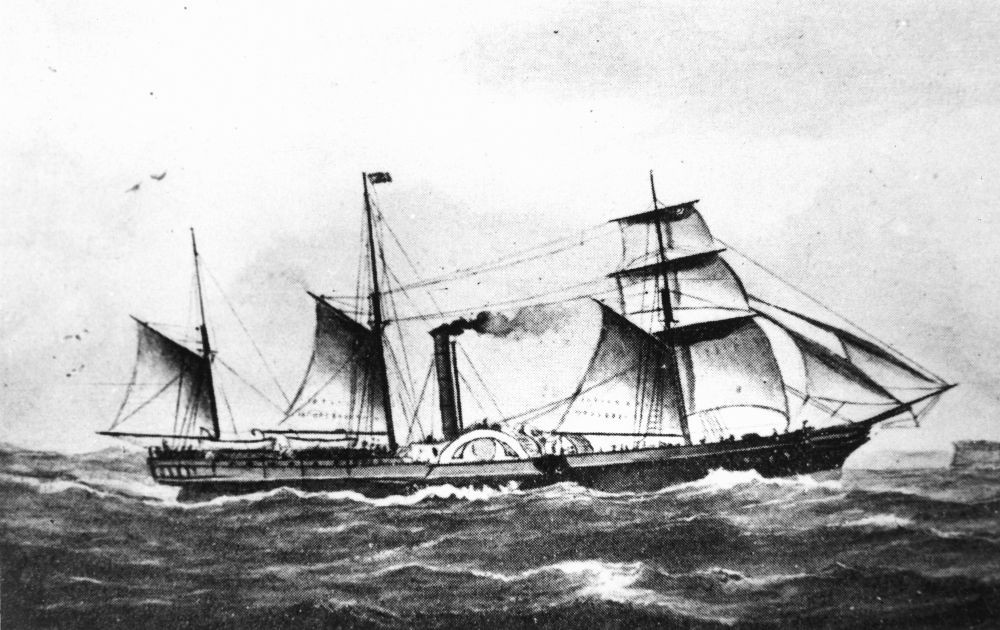
By 1873 Queensland had 11 operating ports. The newspapers advertised the predicted and actual arrival of each coaster, and the loads of wool, coal, barrels and products on board as well as well known passengers. Others just travelled “in the steerage” and were generally not named.
Numerous shipping companies arose, with many mergers in economically challenging times. The companies became familiar names in the Australian landscape, with each of the major companies having their own wharves at which both goods and passengers were loaded - Hunters River Steam Navigation Co, AUSN, Howard Smith, Burns Philp, Adelaide Steamship Co and a host of others. The ships competed to have the fastest times and advertised in the newspapers of the day to attract both business and tourist travellers.
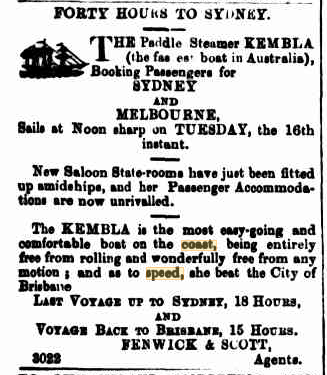
By 1887, with a merger of the Queensland Steam Ship company and the ASN, there were 37 Coasters regularly plying the Queensland coast. As other forms of transport developed, the shipping companies saw the opportunity to appeal to the tourist and a luxury element became a feature of the coaster.
“Truly Palatial” claimed the advertisements as they listed the gymnasium, verandah café and swimming baths of the grand ships of the Golden Era of the coasters – from Federation to World War 1. The SS Katoomba advertised hot and cold running water, a hospital with a qualified doctor onboard and their latest innovation – the Katoomba Ladies Orchestra
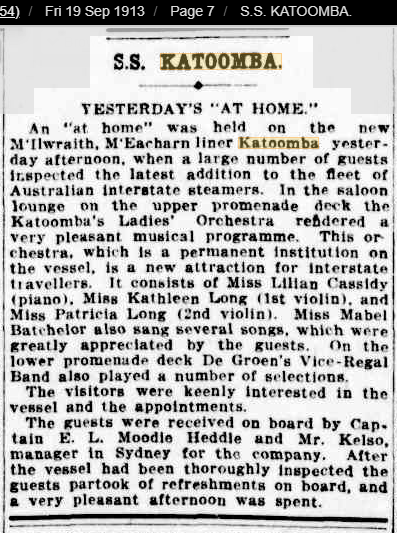
The Sydney Morning Herald, 19 September 1913, p. 7, http://nla.gov.au/nla.news-article15451464
The SS Indarra at more than 9,000 tons was the largest of the coastal liners and it boasted all of the above luxuries as well as an electric lift! There was also much advertisement of the “sideboard” available – an indication that there was a plentiful array of alcoholic drinks to accompany delicious meals. A quart of Moet champagne cost 10 shillings while a bottle of the choicest sherry could be had for 5 shillings. Havannah cigars and playing cards were priced at 6d.
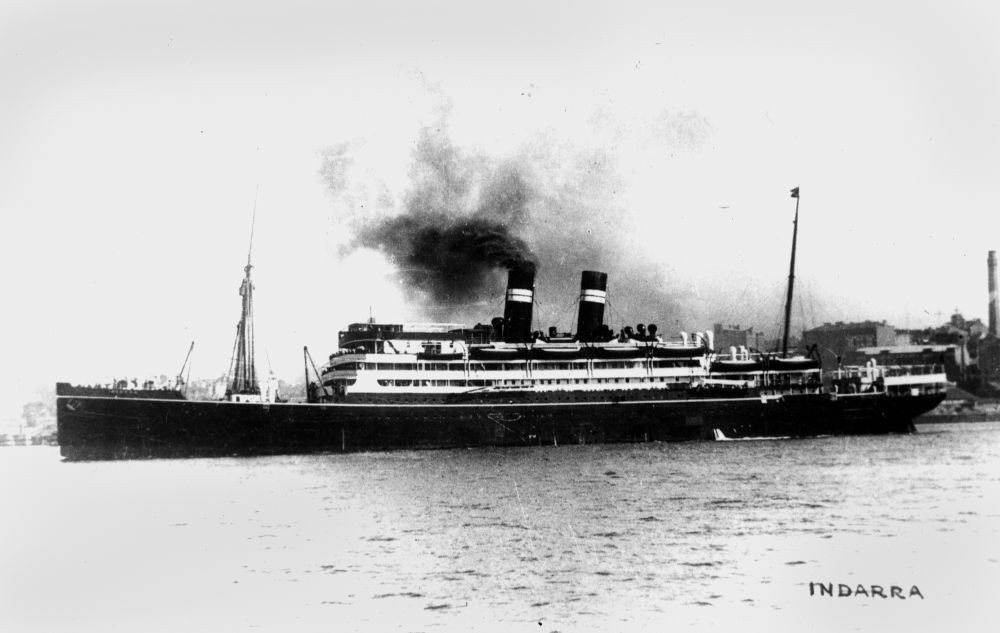
The cost of the journey during the Golden era of coasters was 2 pounds 10 shillings for the trip to Sydney, a journey that would generally take 2 to 3 days, depending on weather. The trip between Melbourne and Sydney was more expensive, at 4 pounds and ten shillings. However, travelling second class or in the steerage was value for money at 25 shillings for the journey from Brisbane to Sydney. Sailings were twice weekly from Brisbane for most ports, both to the north and to the south.
World War 1 saw the decline of the trade, and many of the ships were commandeered as troop ships, with the SS Kyarra making 7 trips to Egypt. After the war, railways and motor vehicles developed and the air lines gradually took the first- class tourist trade.
Luxurious coastal ships still plied their trade in the 1930s but disappeared completely after World War Two. Advertising in 1931 shows the lifts between floors and one of the lounges. The emphasis was on luxury and enjoyment whilst travelling from A to B, such as deck games of croquet.
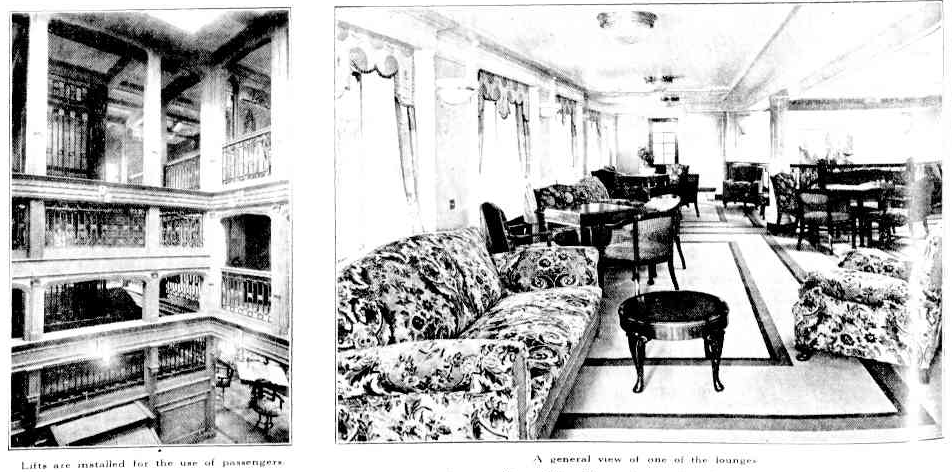
The Australian Coastal shipping trade was often labelled as the best in the world in shipping magazines and popular news articles of the day. Of the many ships that completed the coastal journeys, most saw many years of useful service, carrying both cargo and passengers as well as the mail. There were shipwrecks and losses, including the Lyee Moon, the Yongala and the Quetta, to name a few. However, for the most part, it was a safe and comfortable mode of travel that kept colonial Australia connected.
If you found all this fascinating why not attend our talk, Port to Port: Coastal shipping in Australia, at the Queensland Maritime Museum on Thursday 24 October 2019 at 10am. The talk is free as part of Museum admission, and includes morning tea.
Christina Ealing-Godbold
Specialist Librarian, Information Services
More
information
Talks
State Library of Queensland talk at Queensland Maritime Museum,
Port to Port: Coastal shipping in Australia, Thursday 24 October 2019, 10am - https://maritimemuseum.com.au/eventsandexhibitions/talks/port-to-port-coastal-shipping-in-australia/
State Library of Queensland talk, Shipping and immigration records, Friday 8 November 2019, 10-11am, Training room (level 1) -
/whats-on/shipping-and-immigration-records
Resources
A G Davies, PIONEER STEAMSHIPS IN QUEENSLAND WATERS, Journal
(Historical Society of Queensland), v.3, no.1, Dec 1937, p.5-26 https://espace.library.uq.edu.au/view/UQ:207854
R Parsons, Australian Shipowners and their fleets , PAM 387.5240994 1972, Request and collect from level 3
Barry Pemberton, Australian coastal shipping, G 387.20994 1979, Request and collect from level 3.
Trove digitised newspapers - https://trove.nla.gov.au/newspaper/
One Search catalogue - http://onesearch.slq.qld.gov.au
Ask Us - /plan-my-visit/services/ask-us
Comments
Your email address will not be published.
We welcome relevant, respectful comments.